
It’s hard to be creative on demand, and harder still to fill a content calendar with high-performing blog post ideas.
Content ideation is the process of generating article ideas. A solid ideation process makes it easy to brainstorm dozens of blog post topics, hit a regular publishing cadence, and consistently grow traffic—without unnecessary brain strain.
8 content ideation methods
Let’s get specific, and look at eight very different, very useful sources of inspiration for your content marketing.
The simplest way to generate content ideas is also one of the most useful: provide responses to the questions people ask about your product, your company, and your industry.
Prioritize questions that your product can naturally help to answer. For a marketing analytics tool, that might mean answering questions about heat mapping and attribution. For a carpet fitting company, common types of flooring. For Ahrefs, it’s link-building and keyword research.
Examples:
It’s easy to find questions with significant search volume using Keywords Explorer. Enter your seed keywords (in this case, “carpet” terms), click the Matching terms report, and select the Questions report. You’ll see a list of question keywords that include your seed terms:
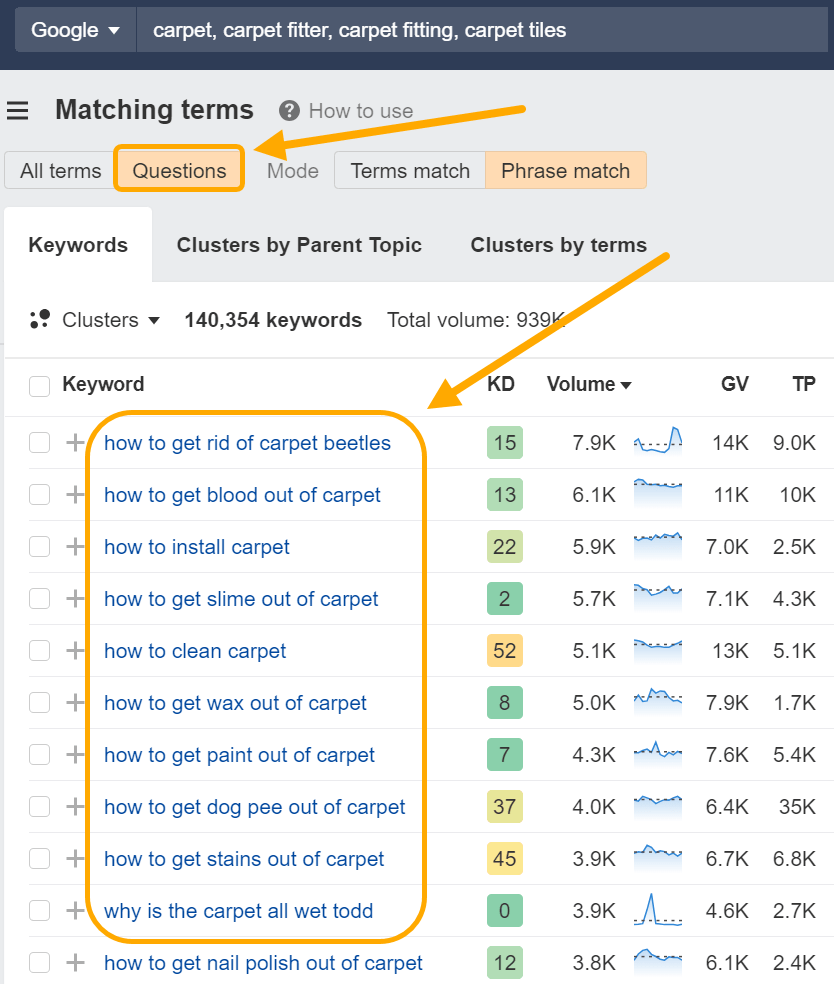
Content marketing is designed to help sales, and the most immediate way to achieve that goal is to directly address sales objections. Record the problems that prevent people from becoming customers (or ask your sales team), and write responses to their issues.
Creating a shared, documented response for the whole company to learn from is a great way to speed up sales deals and persuade would-be customers.
Examples:
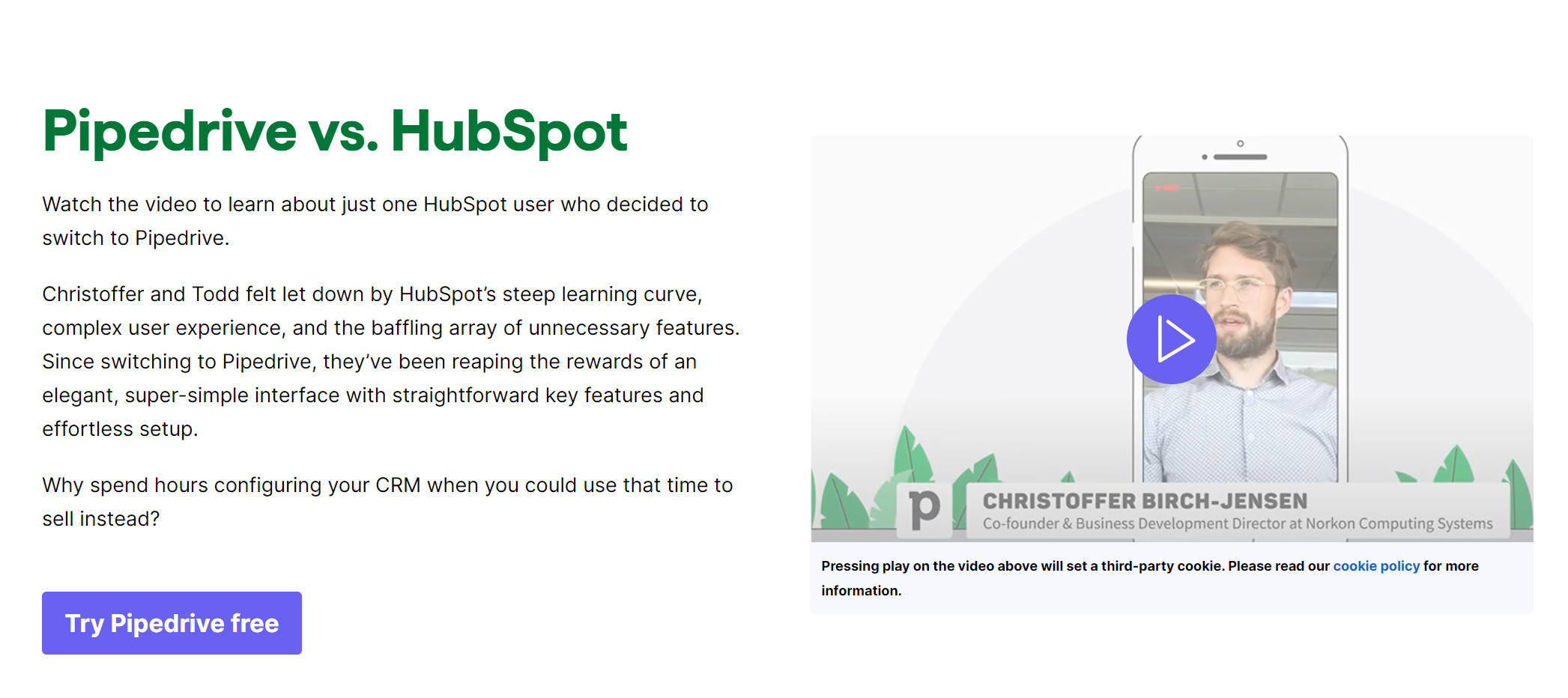
Pipedrive compares its product to close competitor HubSpot.
Another way to help sales: tell the world about how awesome your company is. Document your customers’ wins, how they achieved them, and the role your company and products played in their success.
Our golden rule applies double here: make things that help people. A case study should do more than just boast about your amazing features and decisions: it should also help the reader solve a hard problem for themselves.
Examples:
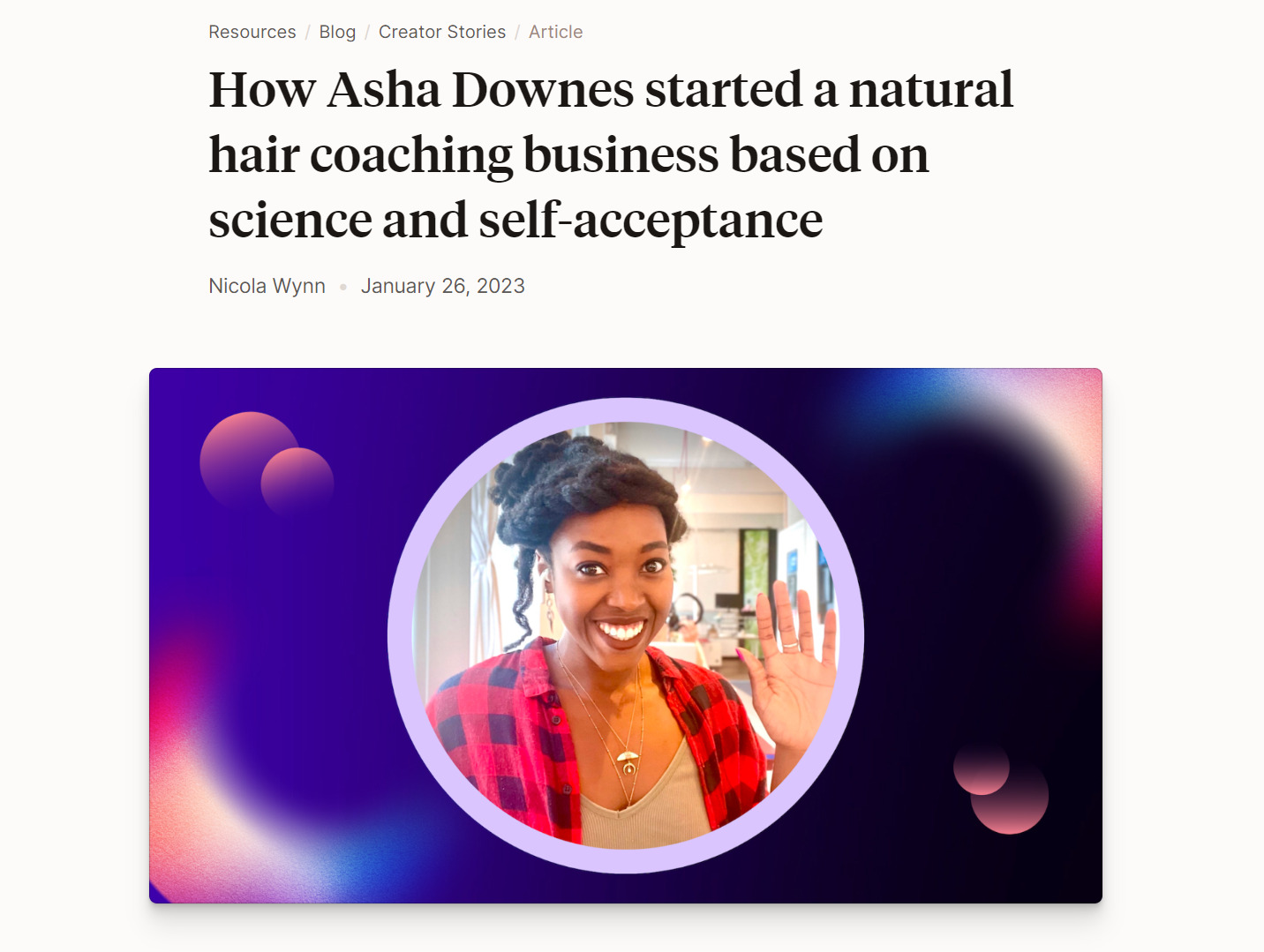
Podia highlights the success of one of its customers.
Chances are high that your competitors already have a few content pieces generating new business for them. If you can identify the content that generates the greatest traffic or backlinks, you can create your own (better, or different) version to siphon away some of their business.
(But remember to create new, original ideas too: you don’t want your entire content strategy to be a carbon copy of your competitors.)
Examples:
To easily see which articles generate the most traffic for your competitors, enter the URL of their blog into Site Explorer and navigate to Top pages. You’ll a list of pages ordered by estimated organic traffic, from highest to lowest. In this example, we can see three articles that account for almost 20% of the traffic to Ahref’s blog.

If you can help your customers and would-be customers understand the world around them, you can help them make better decisions (and earn their goodwill in the process).
Use your experience to explain why things happen, and how people should respond. Highlight new technologies to use, explore the possible consequences of new trends, or share high-performing business strategies.
Examples:

Ahrefs (that’s us!) shines a light on Zapier’s successful approach to SEO.
Every industry is rife with best practices and truisms (ideas that most people believe and follow). But is a best practice still helpful once everyone knows about it and copies it?
If your knowledge and experience tell you that some commonly held ideas are wrong or unhelpful, you can help people by challenging those ideas, explaining why they don’t work in practice, and suggesting a better approach.
Examples:

Basecamp explains why they don’t use wireframes.
You and your team have unique experiences: hard problems you’ve had to solve, processes you’ve built, and lessons you learned the hard way. Whenever these experiences would prove helpful to your target audience, share them: let them learn from your effort and shortcut straight to a solution.
Our golden rule crops up again here: not all of your personal experiences will be helpful to your target audience, so be discerning about what you share.
Examples:
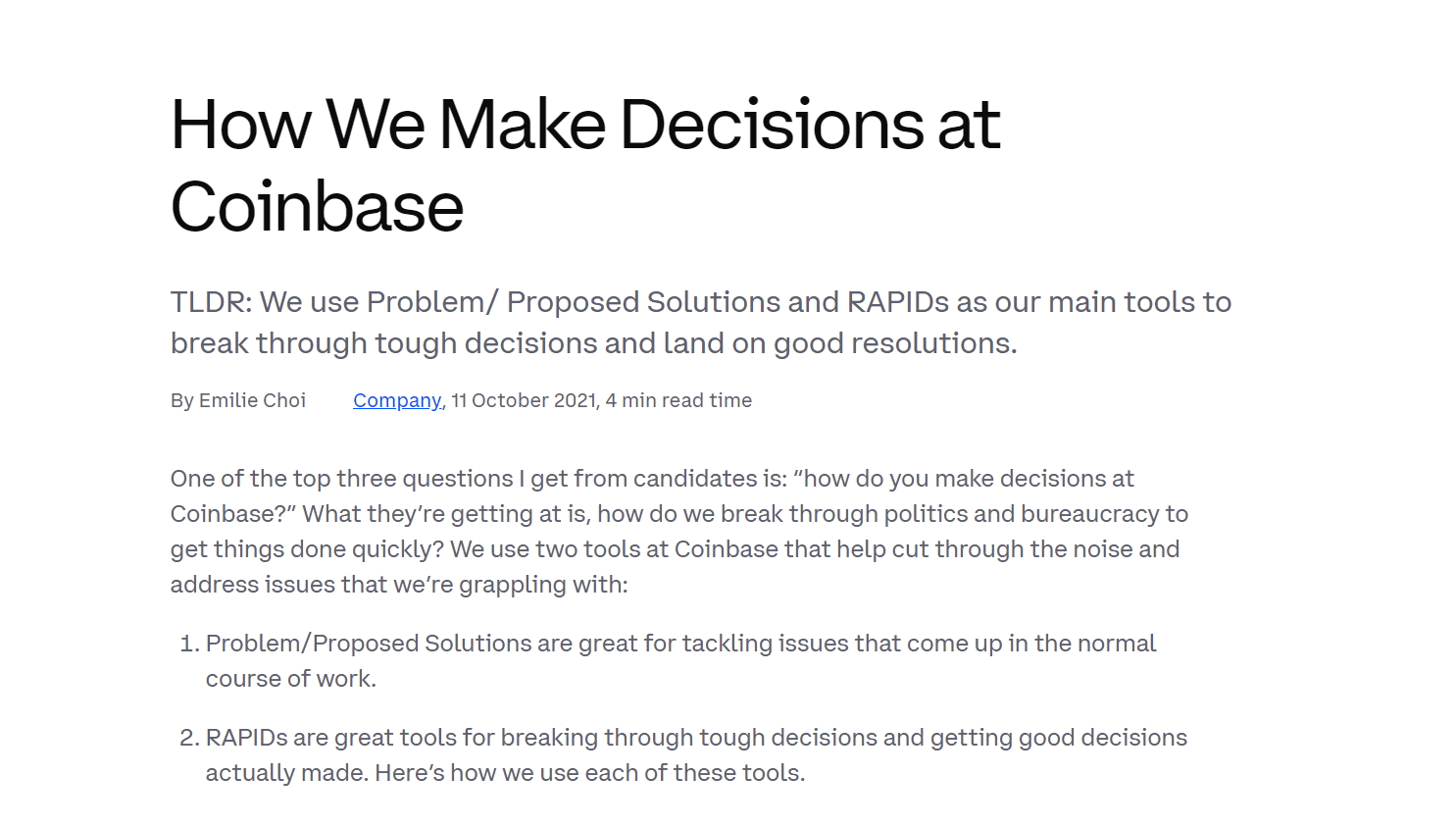
Coinbase shares its decision-making framework.
Content can help to create a clear, articulate version of your company’s philosophy: why you exist, why you built your product in a particular way, and what you value.
Customers care about features and pricing, but in some cases, being able to buy into a vision that they support can help seal the deal. The same goes for persuading potential employees, and even investors: it helps to share your company’s beliefs and reason for existence.
Examples:
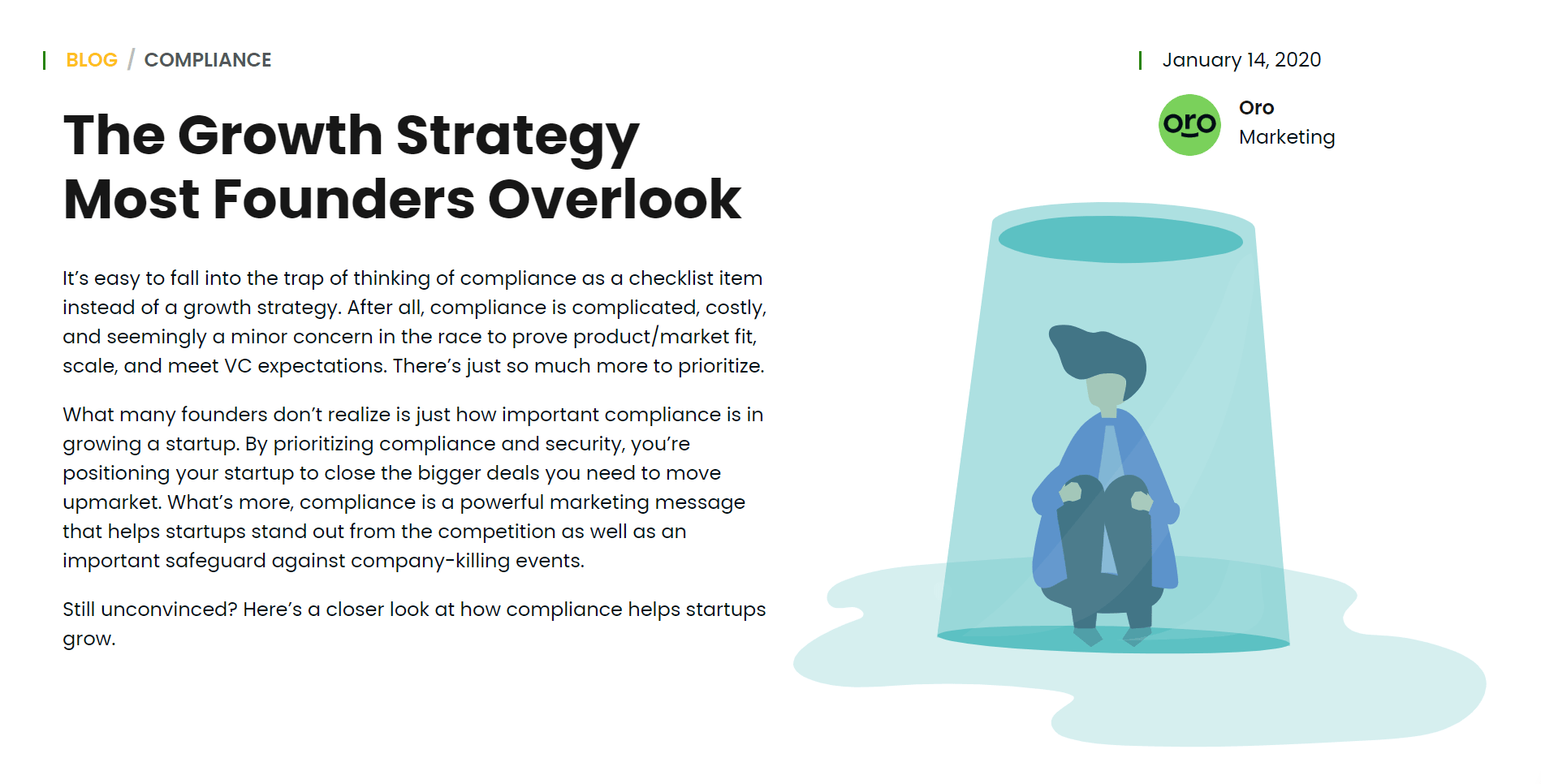
Thoropass explains the big vision behind the founding of their company.
Final thoughts
Having original, creative ideas is a serious challenge, but the more tools you have in your mental toolkit—methods of ideation, types of source material, and sources of feedback—the easier content ideation becomes. And, with every idea you create, the easier it becomes to create another, as previous ideas plant the seeds for future ones.
Want to share your ideation process? Connect with me on X or LinkedIn.
Content Copyrights Belong to The Author. All Rights Reserved.
We're A Dallas Digital Marketing Agency That is Experts At Social Media Marketing, Website Design and Emarketing and Promotion.



